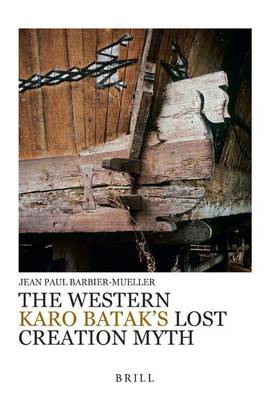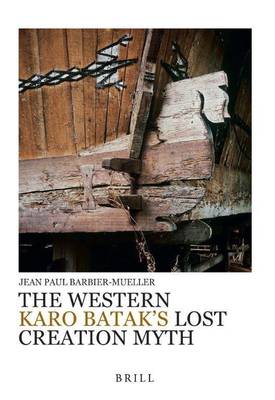
- Afhalen na 1 uur in een winkel met voorraad
- Gratis thuislevering in België vanaf € 30
- Ruim aanbod met 7 miljoen producten
- Afhalen na 1 uur in een winkel met voorraad
- Gratis thuislevering in België vanaf € 30
- Ruim aanbod met 7 miljoen producten
Zoeken
€ 96,45
+ 192 punten
Omschrijving
Unlike the Toba Batak, their more populous and powerful neighbours in northern Sumatra, the western Karo Batak today claim they have no creation myth. Yet certain clues point to shared cosmogony among several Batak groups, now reinforced by Jean Paul Barbier-Mueller's discovery of a very old traditional house among the western Karo. The symbolic decoration of the house eliminates all doubt: the western Karo once viewed the cosmos as divided into three worlds - Upper, Middle and Lower. The giant dragon who lived in the Lower World carried the Middle World (where humans reside) on its back, while the Upper World was the abode of a supreme deity accompanied by his sons, spirits and the souls of human ancestors who had been rich and powerful.
Specificaties
Betrokkenen
- Auteur(s):
- Uitgeverij:
Inhoud
- Aantal bladzijden:
- 110
- Taal:
- Engels
Eigenschappen
- Productcode (EAN):
- 9789004288188
- Verschijningsdatum:
- 17/12/2014
- Uitvoering:
- Paperback
- Formaat:
- Trade paperback (VS)
- Afmetingen:
- 163 mm x 229 mm
- Gewicht:
- 408 g

Alleen bij Standaard Boekhandel
+ 192 punten op je klantenkaart van Standaard Boekhandel
Beoordelingen
We publiceren alleen reviews die voldoen aan de voorwaarden voor reviews. Bekijk onze voorwaarden voor reviews.








